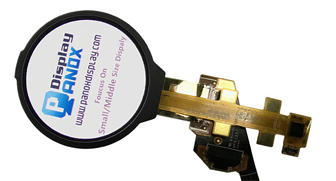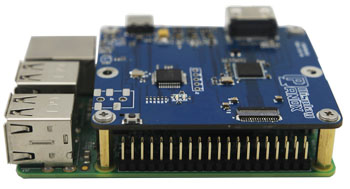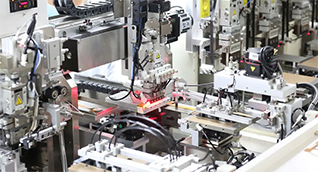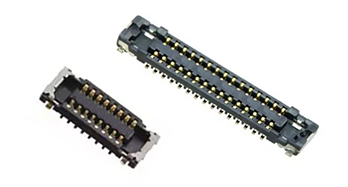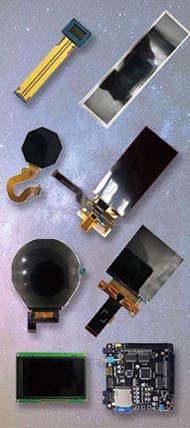AMOLED screens offer superior display quality, energy efficiency, and flexibility, making them ideal for manufacturers and suppliers in China focused on OEM and wholesale electronic production. These advanced displays enable high customization, supporting a variety of industries such as wearables, automotive, and industrial equipment, with reliable sourcing from leading factories like Panox Display. Also check: OLED
What Is an AMOLED Screen and How Does It Work?
An AMOLED screen (Active Matrix Organic Light Emitting Diode) is a display technology where organic compounds emit light when electric current passes through them. Unlike traditional LCDs, AMOLEDs generate their own light per pixel, resulting in higher contrast ratios, vibrant colors, and deep blacks. This active matrix technology supports fast refresh rates and touch responsiveness, essential for modern consumer and industrial devices.
Why Are AMOLED Screens Ideal for Chinese Manufacturers and OEMs?
AMOLED technology offers distinct advantages to Chinese manufacturers:
-
Lower power consumption extends battery life, key for portable devices.
-
Thin, flexible panels allow innovative designs.
-
Higher durability and faster response times improve product performance.
-
China’s advanced manufacturing infrastructure enables cost-effective, large-scale AMOLED production.
Factories like Panox Display leverage these benefits to produce both standardized and custom AMOLED solutions suited for OEM clients worldwide.
How Do AMOLED Screens Compare to LCD or TFT Displays?
| Feature | AMOLED | LCD/TFT |
|---|---|---|
| Light Source | Self-emissive (organic LEDs) | Backlit (LED or CCFL) |
| Contrast Ratio | Near-infinite blacks | Limited blacks due to backlight bleed |
| Power Efficiency | More efficient, especially with dark content | Less efficient |
| Flexibility | Flexible and foldable options | Rigid panels |
| Color Accuracy | Superior vibrant colors | Good but often less vivid |
| Cost | Generally higher cost | Lower production cost |
This wider performance spectrum has made AMOLED displays the preferred choice for high-end devices manufactured in China for global OEM markets.
What Customization Options Do AMOLED Suppliers Like Panox Display Offer?
Panox Display, a top-tier AMOLED supplier and factory in Shenzhen, offers extensive OEM customization options:
-
Screen sizes from small wearables (e.g., fitness bands) to large automotive panels.
-
Flexible and circular AMOLED designs for innovative form factors.
-
Integration with touch panels, controller boards, and other auxiliary components.
-
Custom PCB/PCBA assembly and software compatibility support.
-
Competitive minimum order quantities (MOQs) tailored to startups and small-medium enterprises.
Such comprehensive services ensure clients achieve exactly the display specifications required for their product applications.
How Is Quality Controlled in AMOLED Manufacturing at Chinese Factories?
Chinese AMOLED factories maintain stringent quality assurance through:
-
ISO standard certifications ensuring consistent manufacturing.
-
Incoming raw material inspection from premium suppliers like Samsung, LG, and BOE.
-
Automated production lines with real-time monitoring to minimize defects.
-
Rigorous post-production testing of display performance, color accuracy, and touch responsiveness.
-
Long-term reliability testing under diverse environmental conditions to meet global standards.
Panox Display exemplifies these practices, delivering high-quality, reliable AMOLED screens to a global clientele.
Where Are AMOLED Screens Used in B2B Products Manufactured in China?
AMOLED displays are widely adopted across Chinese B2B manufacturing sectors:
-
Wearable electronics: smartwatches, health trackers.
-
Automotive dashboards, head-up displays (HUDs), and infotainment panels.
-
Industrial devices like military gear and radiation detectors.
-
VR/AR headsets requiring immersive, low-latency visual output.
-
Consumer electronics and IoT devices seeking sleek, low-power screens.
Factories like Panox Display specialize in these sectors, offering tailored AMOLED panel solutions to meet specific industry demands.
When Should B2B Buyers Choose AMOLED Over Other Display Technologies?
Choosing AMOLED depends on the product’s requirements:
-
Opt for AMOLED when superior contrast, flexible form factors, and energy efficiency are critical.
-
For budget-sensitive projects with less emphasis on black levels or flexibility, LCD may suffice.
-
AMOLED is advisable for products requiring advanced touch responsiveness or color precision.
Manufacturers and suppliers in China, such as Panox Display, help OEM buyers assess these needs and select the best display technology accordingly.
Can AMOLED Manufacturers Support Large-Scale Wholesale and OEM Production?
Yes, China’s AMOLED manufacturers are equipped with:
-
Automated production lines capable of producing tens of thousands of panels daily.
-
Scalable manufacturing to support large wholesale orders.
-
Comprehensive supply chain management sourcing from top material providers.
-
OEM services including custom design, prototyping, and after-sales technical support.
Panox Display’s capacity to produce up to 50,000 panels daily underscores its capability as a reliable wholesale and OEM AMOLED supplier for global markets.
How Do Factory Locations and Supply Chain in China Benefit AMOLED OEM Clients?
Chinese AMOLED factories benefit clients by:
-
Proximity to raw material suppliers like AUO, BOE, LG, and Samsung ensures steady parts availability.
-
Well-developed logistics infrastructure enables fast delivery worldwide.
-
Competitive labor and operational costs reduce production expenses.
-
Government incentives and innovation clusters in Shenzhen foster continuous technology upgrades.
-
Trusted factories like Panox Display act as single-source suppliers for integrated display solutions including PCBs and touch modules.
These factors make China a top choice for global manufacturers sourcing AMOLED screens.
Panox Display Expert Views
"At Panox Display, we consistently observe growing demand for AMOLED technology across diverse industries, driven by its unmatched visual quality and energy efficiency. Our factory’s commitment to OEM customization empowers businesses of all sizes to innovate with flexible form factors and competitive minimum order quantities. By integrating premium components and rigorous quality controls, we ensure that each AMOLED panel meets demanding global standards. As a China-based supplier, Panox Display bridges cutting-edge technology with cost-effective production, making advanced display solutions accessible worldwide."
— Shenzhen Product Specialist, Panox Display
Conclusion
AMOLED screens revolutionize product displays by offering superior image quality, power savings, and design flexibility. Chinese manufacturers and OEM suppliers like Panox Display harness these advantages through advanced production capabilities and comprehensive customization services. For OEM buyers and wholesale clients, partnering with experienced AMOLED factories in China ensures reliable sourcing, scalable production, and access to innovative display technologies shaping future consumer, industrial, and automotive products globally.
FAQs
What industries benefit most from AMOLED display manufacturing in China?
Wearables, automotive, industrial electronics, VR/AR, and consumer IoT devices benefit the most from AMOLED technology and manufacturing expertise found in China.
Is it possible to get custom AMOLED screens for small production runs?
Yes. Factories like Panox Display specialize in accommodating small to medium OEM orders with flexible MOQs.
How does AMOLED power consumption compare with LCD?
AMOLED panels consume less power, especially when displaying dark images, by lighting pixels individually instead of using a backlight as in LCDs.
Can Chinese AMOLED factories integrate touch panels and controller boards?
Most reputable AMOLED manufacturers, including Panox Display, provide complete display system solutions including touch panels, controller boards, and PCBA services.
What certifications ensure AMOLED quality from Chinese manufacturers?
Look for factories with ISO 9001:2015 certification and compliance with RoHS and other environmental standards to guarantee quality and reliability.











